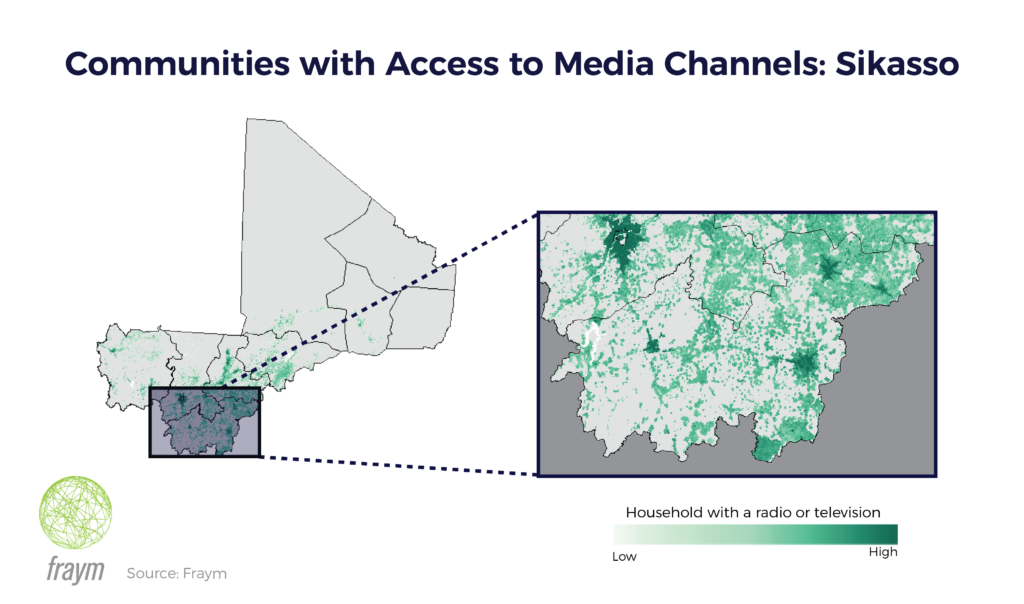Build Effective Social and Behavior Change Strategies

Fraym’s local-level data can target programming where impact is greatest: at the community level. In light of the International Day of Zero Tolerance for Female Genital Mutilation (FGM), Fraym examined how local-level insights can accelerate efforts to end FGM worldwide. Prevalence of FGM has and can be reversed with increased awareness of its lasting damage to women and girls, especially countering the misconceptions that FGM either has beneficial or no side effects. Disturbingly, medical providers are increasingly performing FGM out of the belief that medicalization can decrease its danger, a misconception that the WHO resoundingly discredits.
Countering this increased legitimization of FGM as a medical procedure is essential. Mapping communities and the ways people within them consume information helps civil society organizations, healthcare professionals, and policy makers understand where and how this practice is taking place, and where increased communication can have an impact.
Fraym’s geospatial understanding of key indicators enables targeted intervention, especially in countries with significant regional differences and limited data. Mali is one of 17 countries where the UNFPA-UNICEF Joint Program on Female Genital Mutilation operates, with an estimated 91% of women and girls aged 15 to 49 having undergone some form of FGM. However, opinions on the topic vary drastically by region. While overall, 70% of women and 69% of men in Mali believe that religion requires FGM, these beliefs are concentrated in the south: only 4% of men in Gao region hold this belief, compared to 78% in Sikasso.
Zooming into communities in Sikasso, Fraym’s localized connectivity profiles can further inform messaging campaigns. Using Fraym data on common communication channels such as radio and television access within households, we can visualize how people access information and tailor awareness campaigns to local contexts. Mapped across Mali and within Sikasso, this profile displays hotspot communities where radio and television campaigns countering FGM misinformation could be especially successful. For example, urban and peri-urban areas such as Bougouni and Sikasso have higher concentrations of households with a radio and/or television, while the northeast and southeast of Sikasso region may need direct contact from healthcare workers or civil society organizations.

Hyperlocal information like Fraym’s can reverse FGM trends at the community level by providing square-kilometer insight into conditions on the ground. With information on how target communities consume information, decision-makers aiming to expose the dangers of FGM have pinpointed information to direct media and in-person campaigns where they will have the greatest impact. As we recognize the International Day of Zero Tolerance to Female Genital Mutilation, employing the tools we have available will take us one step further to a safer world for women and young girls.